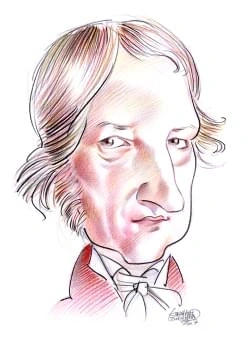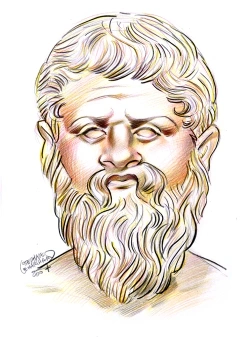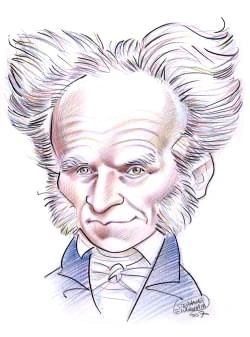13 résultats pour "chlorine"
- Chlorine - chemistry.
-
Inorganic Chemistry - chemistry.
two electrically charged plates (positively charged top plate and negatively charged bottom plate). By measuring the difference in how fast these electron-laden oildrops fell when the metal plates were charged and uncharged, Millikan was able to calculate the total charge on each oil drop. Because each measurement was a wholenumber multiple of -1.60 × 10 -19 coulombs, Millikan concluded this was the charge carried by a single electron. Using Thomson’s electron charge-to-mass ratio, Millikan then...
-
Chemistry - chemistry.
parts of oxygen by weight, which is a ratio of about 1 to 8, regardless of whether the water came from the Mississippi River or the ice of Antarctica. In other words, acompound has a definite, invariable composition, always containing the same elements in the same proportions by weight; this is the law of definite proportions. Many elements combine in more than one ratio, giving different compounds. In addition to forming water, hydrogen and oxygen also form hydrogen peroxide.Hydrogen peroxide h...
-
Environment.
escape into space of the infrared energy radiated back out by Earth. This process is referred to as the greenhouse effect. These gases, primarily carbon dioxide,methane, nitrous oxide, and water vapor, insulate Earth’s surface, helping to maintain warm temperatures. Without these gases, Earth would be a frozen planet with anaverage temperature of about -18°C (about 0°F) instead of a comfortable 15°C (59°F). If the concentration of these gases rises, they trap more heat within theatmosphere, caus...
-
Greenhouse Effect.
addition, humans cut down huge tracts of trees for lumber or to clear land for farming or building. This process, known as deforestation, can both release the carbonstored in trees and significantly reduce the number of trees available to absorb carbon dioxide. As a result of these human activities, carbon dioxide in the atmosphere is accumulating faster than Earth’s natural processes can absorb the gas. By analyzing airbubbles trapped in glacier ice that is many centuries old, scientists have d...
-
Air Pollution.
Several pollutants attack the ozone layer. Chief among them is the class of chemicals known as chlorofluorocarbons (CFCs), formerly used as refrigerants (notably in airconditioners), as agents in several manufacturing processes, and as propellants in spray cans. CFC molecules are virtually indestructible until they reach thestratosphere. Here, intense ultraviolet radiation breaks the CFC molecules apart, releasing the chlorine atoms they contain. These chlorine atoms begin reacting withozone, br...
-
Chemical Reaction - chemistry.
Many groups of elements occur so often as ions that they are given names: nitrate, NO 3-; sulfate, SO 42-; and phosphate, PO 43-. The suffix -ate usually indicates the presence of oxygen. The positive ion, NH 4+, is called ammonium, as in NH 4Cl, ammonium chloride, or (NH 4)3PO4, ammonium phosphate. Rules for naming more complicated compounds exist, but many compounds have been given trivial names—for example, Na 2B4O7·10 H 2O, borax—or proprietary names—F(CF 2)nF, Teflon. These nonsystemat...
-
Organic Chemistry - chemistry.
B Alkenes and Alkynes Isomeric with the cyclanes, or cycloalkanes as they are sometimes called, is the family of alkenes, also represented by the general formula C nH2n. This family of hydrocarbons is characterized by one or more double bonds between carbon atoms. Propene and cyclopropane, for example, are isomers, as are 1,3-dimethylcyclohexane and 3,4-dimethyl-2-hexene. (The location of the double bond is indicated by the 2-hexene part of the name.) Double bonds may also occur incyclic compou...
-
-
Global Warming.
some of the warming influence of increasing greenhouse gases. A1 Carbon Dioxide Carbon dioxide is the second most abundant greenhouse gas, after water vapor. Carbon dioxide constantly circulates in the environment through a variety of naturalprocesses known as the carbon cycle. It is released into the atmosphere from natural processes such as eruptions of volcanoes; the respiration of animals, whichbreathe in oxygen and exhale carbon dioxide; and the burning or decay of plants and other organic...
-
Antarctica - Geography.
The maximum area of sea ice surrounding Antarctica each winter varies from year to year. A marked decline during the 1970s appears to have reversed in more recentdecades, except in the Antarctic Peninsula area. This area has lost almost 40 percent of its sea ice since the start of the 1980s. Sea ice is important to marine life. Krillfeed on algae that live under the sea ice and are released when the ice melts in spring and summer. In turn, many marine animals feed on krill. Emperor penguinsbreed...
-
Atom - chemistry.
Atoms have several properties that help distinguish one type of atom from another and determine how atoms change under certain conditions. A Atomic Number Each element has a unique number of protons in its atoms. This number is called the atomic number (abbreviated Z). Because atoms are normally electrically neutral,the atomic number also specifies how many electrons an atom will have. The number of electrons, in turn, determines many of the chemical and physical properties ofthe atom. The ligh...
-
Atom
I
INTRODUCTION
Water Molecule
A water molecule consists of an oxygen atom and two hydrogen atoms, which are attached at an angle of 105°.
spontaneously break apart and change, or decay, into other atoms. Unlike electrons, which are fundamental particles, protons and neutrons are made up of other, smaller particles called quarks. Physicists know of six different quarks.Neutrons and protons are made up of up quarks and down quarks —two of the six different kinds of quarks. The fanciful names of quarks have nothing to do with their properties; the names are simply labels to distinguish one quark from another. Quarks are unique amo...
-
Water - chemistry.
flourides in drinking water has been found to reduce tooth decay. See Fluorine. Seawater contains, in addition to concentrated amounts of sodium chloride, or salt, many other soluble compounds, as the impure waters of rivers and streams areconstantly feeding the oceans. At the same time, pure water is continually lost by the process of evaporation, and as a result the proportion of the impurities that givethe oceans their saline character is increased. See Ocean and Oceanography. VII WATER...
}})








